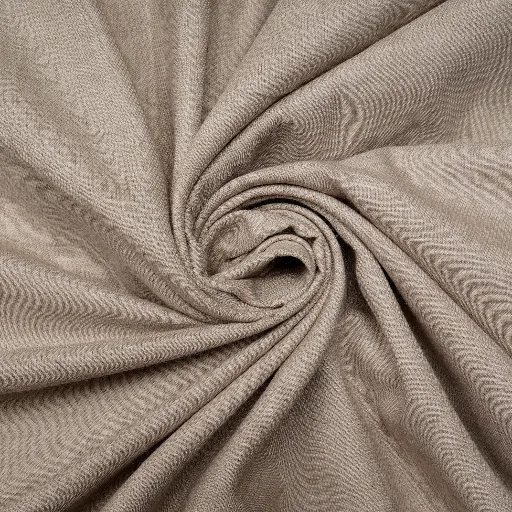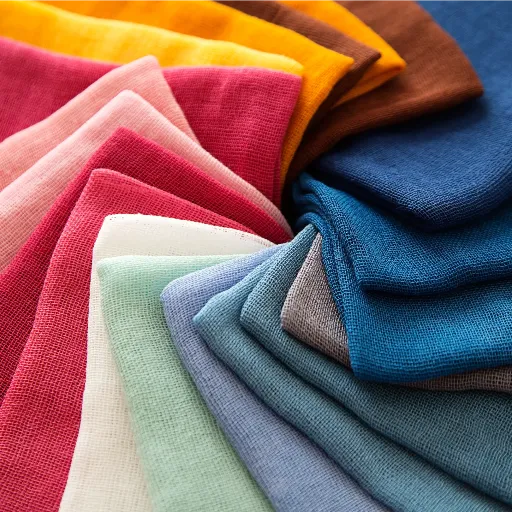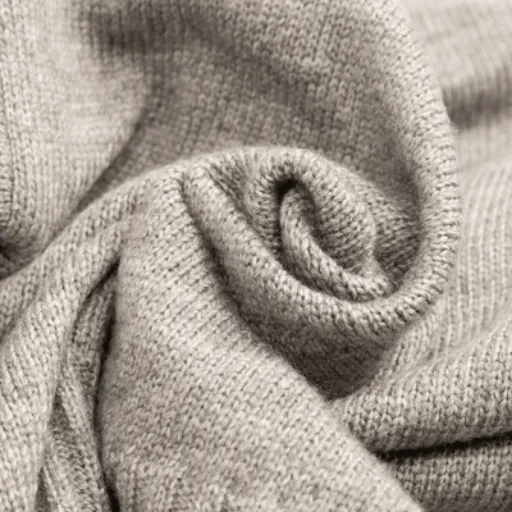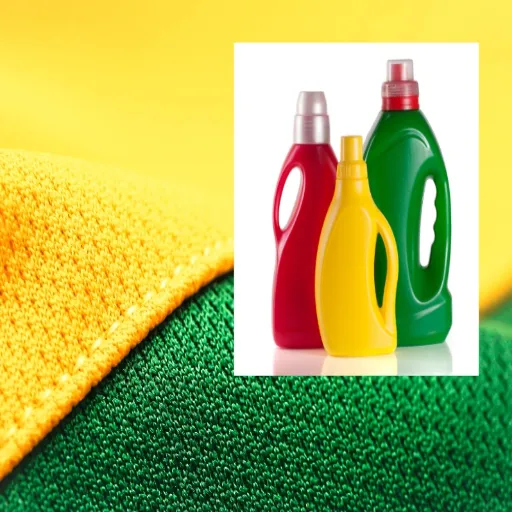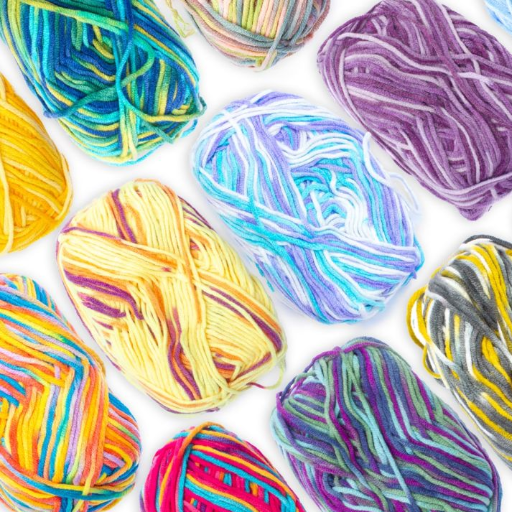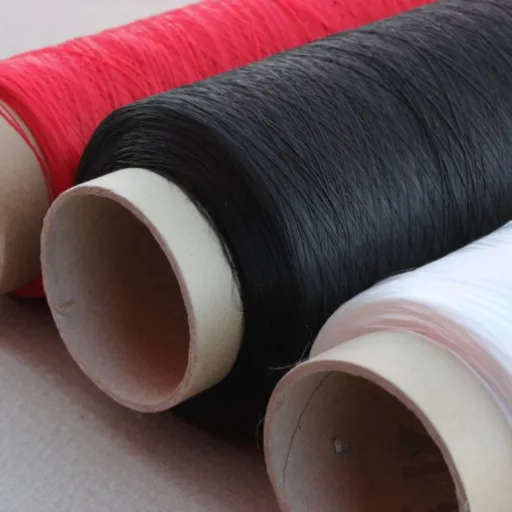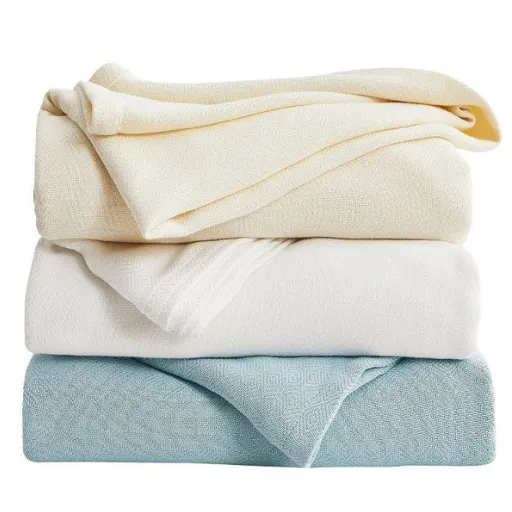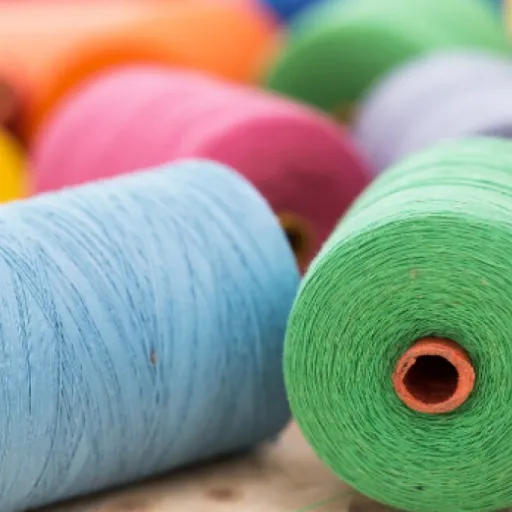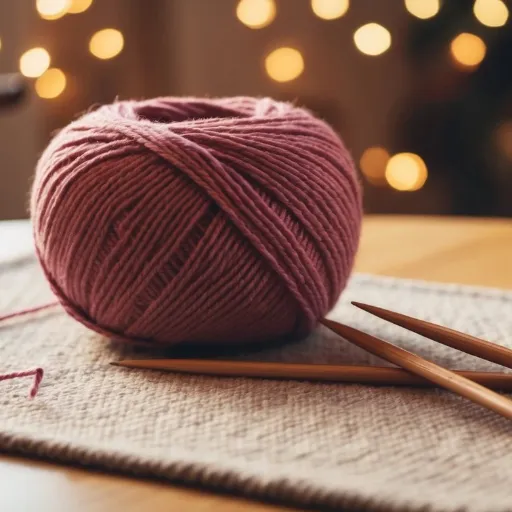With knitters and crocheters worldwide, acrylic yarn is one of the most widely used crafting materials available in the market. In her article, the author thoroughly explains everything one must know about yarn—for example, how do different conditions, such as heat and cold, affect its elasticity. I really commend how thoughtfully and deeply the author approaches the idea crochet and knitting have regarding details involving stretchiness. The creativity in the numerous hypotheses knitted and crocheted enthusiasts have seemed limitless.
What Makes Acrylic Yarn Stretchy?
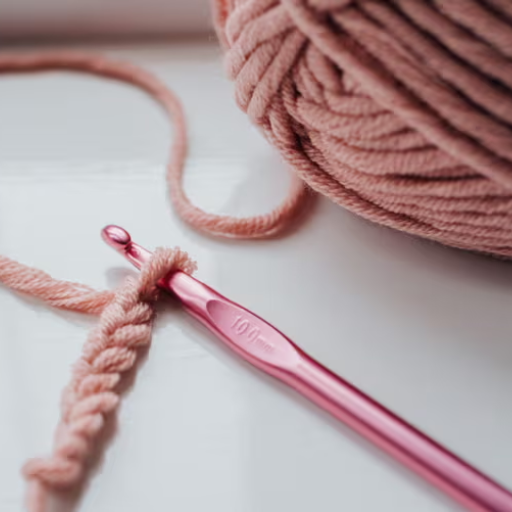
Acrylic yarn is stretchable because of the synthetic nature from which it is derived and how it is made. The resulting fibers obtained from polyacrylonitrile and other co-monomers are one of the types made to be flexible and pliable. Fibers are also stretched during production to fight the strength and elasticity wars. Acrylic yarn has some give. Still, his stretchability is contingent upon several parameters like yarn thickness, dolling up, setting the knitting or crocheting gauge, and whether amalgamation with other fiber is present. Furthermore, pliability aids in shaping. However, caution is paramount to prevent irreversible distortion.
Understanding Yarn Stretch and Elasticity
Both the stretch and elasticity of a given piece of yarn are functions of the constituent raw fibers, the spinning technology employed, as well as the purpose for which the final product is intended. Synthetic acrylic, for instance, is quite durable, moderately stretchable, and pliable, while natural wool is more elastic due the crimped fibers. Acrylic blended yarns composed of natural and synthetic fiber are usually more resilient and versatile in their structural strength manipulations.
The spinning process is something else that can be extremely important when it comes to making the yarn. For example, tight spinning produces a more compact put-up with less stretch, while loosely spun yarns provide more give. Ribbed or garter stitches usually increases stretchability compared to stockinette or tightly woven patterns, which means the type of stitch pattern also greatly affects the extensibility of the fabric.
Yarn constructions can also be changed by temperature and humidity. During blocking or shaping, acrylic yarn is notable for its response to heat, leading to temporary changes in stretch and pliability. For natural fibers, humidity can aid in elasticity, for example because of the wool’s ability to absorb moisture and then release it easier in the form of elastic. These factors need to be understood when picking a specific project in order to meet the needs regarding stretch, functional goals, and aesthetic objectives.
Factors Affecting the Stretchiness of Yarn
Various fundamental structural, chemical, and environmental traits of yarn contribute to its stretchiness. Below are some of the most prominent factors:
- Fiber Composition
As far as yarn stretch is concerned, the constituent fiber is of utmost significance. Acrylic and nylon, for example, are classified as synthetic fibers. Stretches with ease and resists permanent creases, meaning they are more pliable. Thus, these fibers tend to have higher stretchability. Natural fibers such as wool come with crimped structures, allowing some reasonable stretch, however, cotton fibers are far more rigid and devoid of elasticity, making them less easy to stretch.
- Fiber Preparation and Spinning Technique
Methods for creating yarn also affect the stretch it can possess. Yarn elasticity is usually lower with highly twisted yarns due to the packed structure being too resistant to elongation. However, low twist yarns are more elastic since they retain the inherent characteristics of the fibers.
- Stretch Recovery Capability
Furthermore, how much a yarn stretches impacts how easily it can recover its original length. For example, wool contains a keratin structure that is helical which allows it to bounce back easier granting it natural resilience. On the other hand, stretchy acrylic yarns are not great with recovering after being stretched for long periods of time.
- Blends and Additives
Fabrics containing stretchable materials like spandex or Lycra have better stretchability. Some Polyurethanes and certain finishes also enhance how the material behaves under tension making it suitable for fitted garments and sportswear.
- Environmental Factors
External factors like temperature of yarn tend to leave an adhesive quality to the surface of materials, which allows softening of other substances around the surface. Additional Helen pitches saran fibers like polyester fibers, stretch them during drafting and increase yarn elasticity.
For achieving durability, elasticity, or aesthetic appeal for any project, understanding how these factors interplay will be crucial when selecting the appropriate yarn. Meeting desired performance and durability in the final textile product can be attained with careful consideration of the fiber type, spinning techniques, and the surrounding environment.
How to Care for Acrylic Yarn
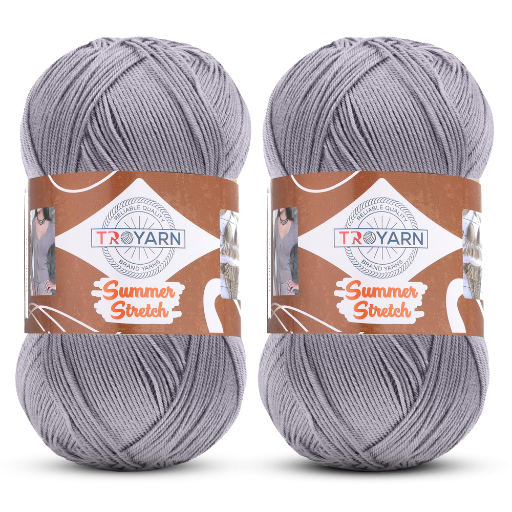
- Washing: Acrylic yarn can be cleaned conveniently in a washing machine. Set the machine on a gentle cycle with cold or warm water. Remind yourself not to override the system, or else line damage will occur, as well as potentially stretching out the yarn. As with all yarns, the packaging usually contains detailed instructions.
- Drying: You may freely set your dryer on low heat, but best practice is flat laying basking acrylic yarn to avoid any needless overheating. Warping or melting the substance’s fibers can result if left under heat for too long.
- Ironing: Like other items you should avoid at all costs, irons and any item that generates extreme heat is not necessary. If you have to, turn an iron on to a low setting and position a piece of cloth over the garment to avoid the fibers being disfigured.
- Storage: To avoid lose color vibrancy, acrylic should be avoided to be set directly under the sunlight and store items in a warm dry space to prevent containing moisture.
- Pilling: In the event that pilling develops over time, carefully ‘fluff’ off fuzz with a fabric shaver to make it smooth again.
These easy steps together can help retain the quality of acrylic yarn and prolong the lifespan of any finished projects. Always check specific care instructions to avoid any damage.
Washing and Drying Acrylic Yarn
Acrylic yarn is very easy to clean and maintain than other materials owing to its durability. The fibers of acrylic yarn are best cleaned with lukewarm water and a gentle detergent. Machine washing is generally safe but only using the delicate or gentle cycles to prevent strain on the yarn and avoids high temperatures. Seaming knitting needs high temperature yarn washes, as the increase wash temperature can lead to warping over time.
For washing acrylic yarn projects, air drying is the most effective method for preserving the structure and texture. Shape the item back to its original dimensions so no distortion occurs, and then lay it on a clean, absorbent towel. These steps will prevent distortion, but care should be taken as exposure to direct sunlight can fade the colors. If necessary, tumble drying on low heat is an option, but can overexposure to heat should be avoided as it leads to fiber shrinkage. Ensuring use of these washing and drying techniques will maintain the project’s integrity and visual appeal for a long time.
Tips for Maintaining Acrylic Garments
- Washing Guidelines
As for cleaning garments made of acrylic material, they should be washed on a gentle cycle cold or lukewarm as anything past 104°F (40°C) is bad for the yarn’s fibers. It is wise to choose a soft detergent specifically designed for sheer fabrics to retain the integrity of the synthetic fibers. Don’t use bleach or any strong detergents because these can erode the material and make the material fade.
- Drying Techniques
If possible, acrylic clothes should be air-dried at flat laying positions on clean and dry surfaces. For tops, don’t hang them as that can weight stretch the top when wet. For tumble drying, use low settings below 110°F (43°C). This prevents the shrinkage or structural change in the acrylic fibers.
- Ironing Considerations
Always use low settings when ironing acrylic, below 275°F (135°C) to preserve the fabric. Use cloths to cover placed between the iron and garment to make sure the garment won’t get melted. Shiny marks, or melted parts of the fabric can occur when the iron is placed directly onto the fabric so take caution.
- Storage Practices
ACS should be stored in cold, dry areas free from sunlight and humidity. If hibernating for a long time, folding the clothes aids in shape retention. Use breathable boxes as containers to avoid trapping moisture which means mildew can build up.
Following these steps will retain the durability, flexibility, vibrant colors, and satisfaction of acrylic garments for the longest time possible.
Different Projects You Can Make with Acrylic Yarn
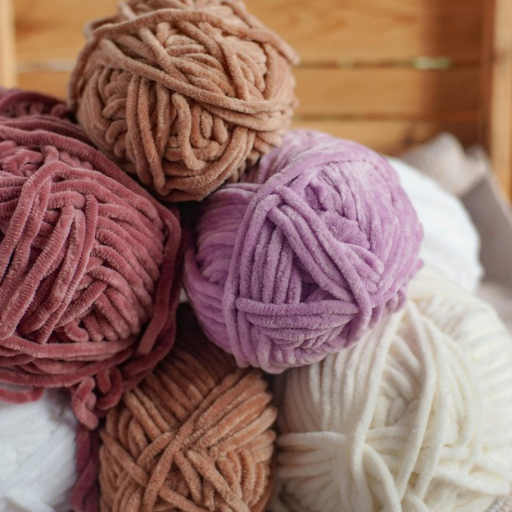
The countless benefits of acrylic fiber yarn greatly widen the range of projects that can be tackled. Examples of these are:
- Blankets and Afghans: The properties of acrylic yarn make it one of the best materials for decorative afghans and warming blankets. Its durability as well as warmth ensures coziness.
- Scarves and Hats: Because of its lightweight nature, it makes scarf, gloves and hat making easy.
- Sweaters and Cardigans: Flexible and with an abundance of colors to choose from, it’s great for making outerwear pieces.
- Amigurumi: The vibrant finishes and easy handling let acrylic yarn have no bounds when crocheting small stuffed animals and toys.
- Home Decor: Using the vibrant and textured yarn to spruce up bland interiors with colour cushions covers, rugs and wall hangings.
These projects show the myriad of ways to effectively decorate, and satisfy functional wants while using acrylic yarn.
Best Knitting Projects for Acrylic Yarn
A wide variety of knitting projects can benefit from acrylic yarn’s affordability, color range, and examples include all domestically used items needing fit material for yarn, durable abrasives and work cloths. Following* are the most appealing knitted works in the market that this material is renowned for:
- Blankets and Throws: The good washing and maintenance properties of acrylic yarn make it popular for knitting cozy blankets and throws. Adding on, their softness and insulating property make them ideal for warm and lightweight home essentials.
- Hats and Scarves: The flexibility and vibrant color choices of acrylic yarn makes it perfect for accessories like hats and scarves. Items of this nature can be furthered customized with a variety of complex designs or bold prints to match personal tastes.
- Sweaters and Cardigans: Because acrylic yarn is very resilient, garments knitted with it will keep their shape. This is great for pieces that are worn a lot. Warm, light acrylic sweaters and cardigans knit can be worn in various styles and climates.
- Children’s Clothing: Its hypoallergenic properties and durability make acrylic yarn a popular choice for knitting children’s clothing. It works well with soft cleaning textiles, such as infant blankets, booties, and sweaters, which require high durability.
- Toys and Plushies: Acrylic yarn meets the needs for strength and color combinations necessary for designing stuffed toys for knitting. Its durability makes it possible for the completed projects to preserve the intended shapes.
Popular Crochet Projects Using Acrylic Yarn
1. Blankets and Afghans
Widely used in crafting afghans and blankets, acrylic yarn offers rich color variety, ease in washing and sturdy build. The material serves common household purposes well and withstands frequent use and cleaning. Different patterns like granny squares, chevrons, and diverse crochet flag squares need, along with myriad colors and weights of the yarn helps in creating intricate masterpieces.
2. Amigurumi
Aficionados who enjoy crocheting small toys, figurines or other such works, weaving them with acrylic yarn is an adorable option. Their crocheting not just looks good, but also makes them vital pieces. Enhanced aesthetics is possible thanks to construction from entire pieces of fine colored smooth yarn available in vibrant colors.
3. Hats and Beanies
A winter hat and beanie is best made with acrylic yarn because it uses synthetic fibers. Synthetics provide stretch, heat, and warm retention. Acquainted crocheters love to use acrylic yarn as it provides the much needed comfortable stretch for tighter fitting pieces such as headwear.
4. Scarves and Shawls
Acrylic yarn is equally suitable for lightweight, warm scarves and shawls. A favorite among crafters, the yarn’s softness along with its matte or shiny finish provides ease in cold weather and retains softness even after multiple washes, making the yarn exceptional for accessory projects.
5. Home Décor Items
Acrylic yarn is extremely visible in crocheted home decor projects from cushion covers to wall hangings. I use this inexpensive yarn because it allows crocheted decorative items to maintain their shape and color over time. Its versatility also allows crocheters to create beautiful pieces that serve to elevate the style of any home.
Its many features and versatility continue to cement acrylic yarn’s place in the crafting world as a go-to material for numerous crochet projects. Whether making usable pieces or intricate designs, cost efficiency, durability, and visual appeal are covered with this yarn.
Choosing the Right Acrylic Yarn for Your Needs
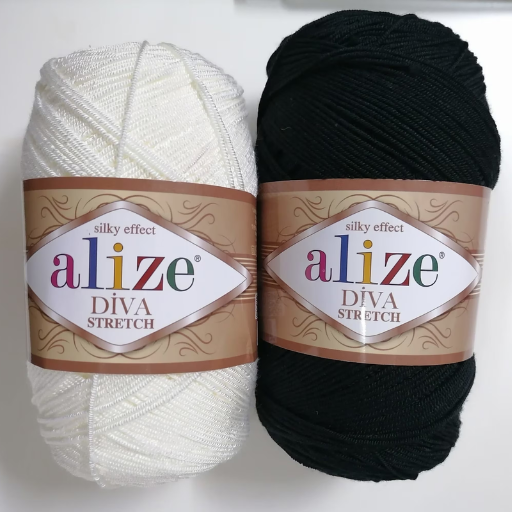
To find the perfect acrylic yarn for your projects, keep the factors listed below in mind:
- Project Requirements: Identifying project type is relevant to this section. For instance, use lighter yarn types for more delicate pieces such as baby clothes or shawls, whereas thicker winter yarns are more suitable for blankets and accessories.
- Softness and Texture: Examine the texture of the yarn. Fitters need comfort, particularly for wearable projects. Not all acrylics are soft and gentle on the skin. Some are better than others.
- Weight Classification: Look at the label to see the weight classification (light, medium, bulky, etc.) to prevent clash with the pattern and the hook.
- Durability: If a project is likely to be used often or washed frequently by machine, they need to use a yarn that is marked as durable, easy-care, and able to withstand the test of time.
- Color and Aesthetic: Use a color or combination of colors that sprout from the acrylic spectrum not just vibrant, solid na variety yarns, but align with your imaginative design. There are countless options, making for a vivid selection.
Choosing these factors will assist you in achieving a tailored acrylic yarn to meetadyour project goals. Consider reviewing the label after all the steps for extra verification.
How to Select the Right Blend for Your Project
The final piece’s purpose alongside its material composition must be taken into consideration when choosing the perfect yarn blend. Blended yarns leverage fiber properties, achieving a balance between strength, texture, and functionality. An acrylic-wool blend will keep one warm due to the wool while it will be durable and cheap because of acrylic, making it a suitable blend for garments like sweaters or hats. On the other hand, cotton acrylic blends are soft, lightweight, and breathable, making them suitable for baby blankets and summer garments. Also take into account the blend’s wash ability, expected environmental conditions, how soft or rigid it should be for the design, among other factors. Also, blends with a higher percentage of natural fibers will enhance comfort and temperature regulation, but usually require more maintenance. To achieve the best outcome for your project, always check the yarn label to confirm the composition as well as the cared label to comply with the recommended instructions.
Finding the Right Drape and Stretch for Your Garment
How a garment stretches and its drape is a result of the knit pattern, yarn construction, and fiber used. In creating garments, excellent drape fabrics must flow and contour with the body. Fabrics with this ability are good for elegant clothing like dresses or shawls. Choosing fibers with innate oblique silk, rayon, or bamboo is essential to achieving this. For structure-demanding garments like jackets, bags, and similar, need firm, preferably stiffer cotton or wool blends with tightly twisted yarns.
Stretch also plays an equally important role alongside functionality and fit, especially in the case of sweaters and activewear. For high-stretch garments, elastic fibers are usually included, like spandex or Lycra, while some others use specific types of knitting like ribbing for stretch and recovery. There are many sources showing comparative elasticity of different fibers which can be used for reference when choosing the materials. The intended use of the garment should always be prioritized; too much stretch may lead to distortion with time while too little may hinder movement.
Reference Sources
-
Compact Spinning in Cotton-based Core-spun Yarn1: This study explores the advantages of compact spinning in cotton-based core-spun yarns. It highlights reduced hairiness, improved strength, and better abrasion resistance. The yarns also exhibit higher air permeability and lower thermal resistance, enhancing comfort and durability.
-
Styrene-Acrylic Polymer Films for Textile Applications2: The study investigates the use of styrene-acrylic polymer films with UV adsorbers for enhancing the lightfastness of textile materials. It concludes that these films can provide effective UV protection while maintaining transparency and color stability.
-
Effect of Mesh Count on Screen Printing Quality3: This research examines how mesh count affects the quality of screen-printed knit fabrics. Higher mesh counts result in better print detail, reduced saw-tooth effects, and improved hand feel, while lower mesh counts provide better background coverage.
Frequently Asked Questions (FAQs)
Q: Is acrylic yarn stretchy compared to wool?
A: Yes, acrylic yarn is generally stretchy, but it may not have the same level of elasticity as wool. Wool yarn can return to its original shape better after stretching, while acrylic may not have the same resilience over time.
Q: What are the pros and cons of using acrylic vs cotton yarn?
A: The pros of acrylic yarn include its affordability, wide range of colors, and ease of care since it can be machine washed. The cons of acrylic yarn include lower breathability compared to cotton and potential wear and tear over time. Cotton yarn, while breathable and durable, tends to be more expensive and can be stiffer to work with.
Q: Can you use acrylic yarn for baby items?
A: Yes, acrylic yarn is often used for baby items because it is soft, colorful, and easy to care for. However, ensure that the specific brand you choose is non-toxic and safe for babies, as some acrylic yarns can be scratchy.
Q: How does acrylic yarn compare to cotton blend yarn?
A: Acrylic yarn is a synthetic option that is typically less expensive and comes in a wider range of colors compared to cotton blend yarn. Cotton blends can offer better breathability and a softer feel, making them suitable for items where comfort is a priority.
Q: What’s the difference between knitting with acrylic vs wool?
A: When knitting with acrylic yarn, you may find that it is lighter and has more vibrant colors. However, it lacks the warmth and moisture-wicking properties of wool yarn. Wool is also more elastic and can better return to its original shape after stretching.
Q: What are the main cons of acrylic yarn?
A: Some of the main cons of acrylic yarn include its lower breathability, potential for pilling, and it may not be as warm as wool. Additionally, some people find acrylic yarn to be scratchy against the skin, which can be a concern for sensitive individuals.
Q: Is acrylic yarn suitable for general knitting projects?
A: Yes, acrylic yarn is suitable for general knitting projects due to its affordability and availability in various weights, including worsted weight. It is a great option for beginners and for making items that will see a lot of wear and tear.
Q: Can acrylic yarn return to its original shape after washing?
A: Acrylic yarn can return to its original shape after washing, but it is important to follow care instructions, such as hand washing and avoiding high heat during drying, to maintain its structure and prevent stretching.








